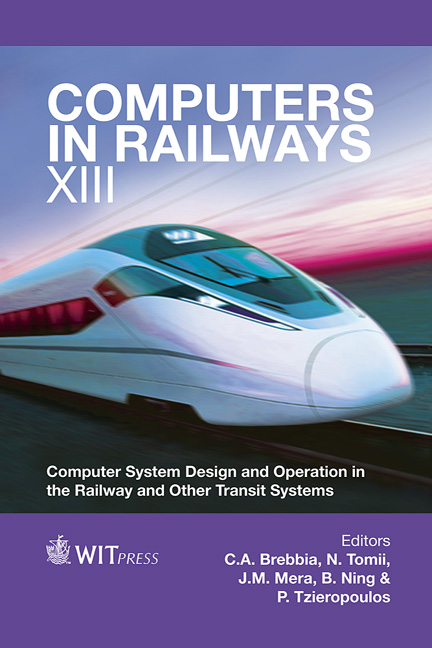Ensuring Timetable Stability With Train Traffic Data
Price
Free (open access)
Transaction
Volume
127
Pages
12
Page Range
427 - 438
Published
2012
Size
2671 kb
Paper DOI
10.2495/CR120361
Copyright
WIT Press
Author(s)
T. Graffagnino
Abstract
Swiss Federal Railways plan and operate one of the densest rail networks in the world. Over the last 8 years, punctuality on the network has been steadily increasing. Figures comparing train traffic density and showing the punctuality of Swiss trains over the last 8 years will be presented and briefly discussed. Then the process of collecting the train traffic data at SBB will be explained and discussed. The main points of this paper will be the mathematical methods and the graphical data visualisation method developed by SBB to continually optimise the timetable with extensive use of historical train traffic data. Based on quite simple collected data – actual arrival and arrival delay, actual departure and departure delay – for each train at about 1000 stations, the paper will define and review the different types of analysis that the method facilities: arrival punctuality, departure punctuality, dwelling time, journey time, dwelling time deviation and journey time deviation. The paper will also discuss the type of distribution function which can be observed and explain why the original statistical definition of boxplots by John Wilder Tukey (Exploratory Data Analysis, Addison-Wesley) has been adapted for rail-related use. Subsequently, the strength of this new defined boxplot is demonstrated with a top-down delay cause analysis starting with punctuality in Switzerland, then comparing the major Swiss stations and the train family, and finally identifying the problems on the corridors. We then show how the usage of median insights into the dynamics of the railway system helps us to identify potential stability problems. To conclude, the identification and visualisation of knock-on delay between trains based on actual train traffic data is addressed as an interesting open issue. Keywords: timetable stability, traffic data, statistic, boxplot, punctuality, cyclic timetable, data mining.
Keywords
timetable stability, traffic data, statistic, boxplot, punctuality, cyclictimetable, data mining





